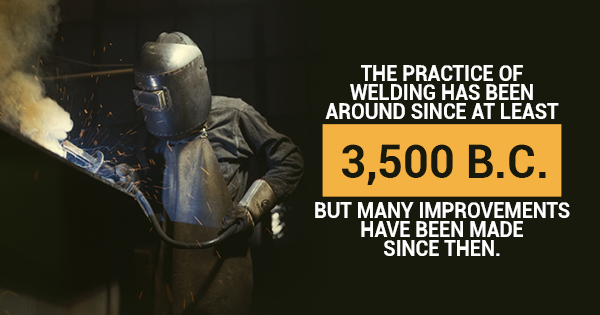Choosing The Right Shielding Gas For Your Weld

The practice of welding has been around since at least 3,500 B.C., but many improvements have been made since then. One of these improvements is the use of shielding gases and purge monitors to keep the welded materials from reacting in unwanted ways during the welding process. Purge monitoring equipment can help welders keep their work consistent, but they’ll also need to choose the right type of shielding gas for a given job. Before you bring out your purging equipment for welding (like your argon purge monitors) and get to work, consider this shielding gas information and use it to improve your final outcomes.
Why are shielding gases necessary?
These inert or semi-inert gases are used during the welding process to protect the material from oxygen, hydrogen, and nitrogen, all of which can impact the weld’s quality or even make the process much harder to perform. Using a shielding gas will help maintain the material’s stability and ensure the finished weld is clean and strong.
How can you determine which shielding gas to use?
Essentially, there are four common shielding gases welders use, all of which have different properties and factors to consider. Carbon dioxide, helium, oxygen, and argon are the top four shielding gases. We’ll explain a few of these considerations below.
- Carbon dioxide: CO2 is one of the more widely used gases during welding. It’s typically the least expensive and the only shielding gas that can be used without adding in an inert gas. When welding a thicker material, CO2 is often the best choice due to its deep weld penetration. However, using it may result in more spatter and a less stable welding arc. Its use is limited to short circuit welding and may require a bit more post-weld cleanup.
- Helium: A more expensive and specialized shielding gas, helium is typically used in non-ferrous metal welding. When welding stainless steels, it needs to be mixed with CO2 and argon. Like CO2, it’s suitable for thicker materials, but it’s seen as a shielding gas that aids in productivity due to the fact it creates a hot arc. Because this shielding gas requires a higher flow rate and is more costly than others, businesses that use welding frequently will need to determine whether their productivity can support these costs.
- Oxygen: Oxygen is not used on its own in purging and is not recommended for many types of metals, including copper, aluminum, and magnesium. It’s utilized in ratios of 9% of less. However, when it’s added to argon, oxygen can improve fluidity, penetration, and stability, especially in stainless steel and carbon.
- Argon: This shielding gas is commonly used to weld aluminum, titanium, and magnesium, due in large part to how stable it is. You can also add argon to CO2 to weld carbon steel. It’s one of the most consistent shielding gases and provides superior quality and appearance. Using an argon purge monitor is often beneficial to keep track of ratios and ensure those other harmful gases are being displaced. Argon purge monitors are available from your purge monitoring retailer.
Now that you have a better idea of the types of shielding gases used in the welding process, you’ll be able to make an appropriate choice for your next weld. Of course, purge monitors are a necessity during this process. To find out more, contact Intercon 1978 today.

